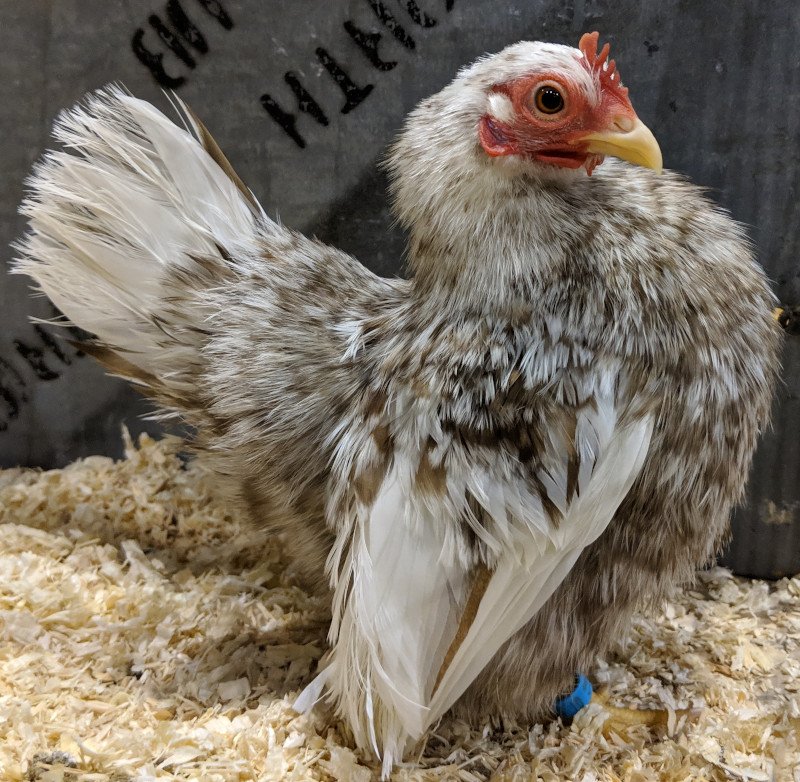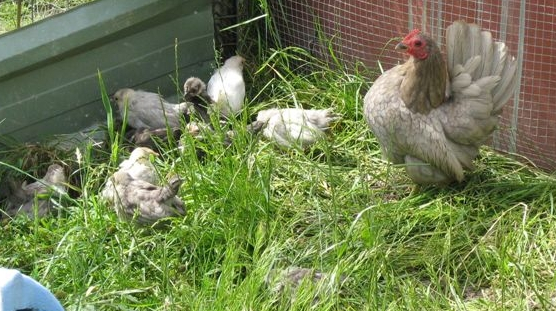
The Japanese Bantam
The Japanese bantam or Chabo is a rare breed of ornamental true bantam from Japan. In Japan, they are called “Chabo”, which means “bantam” or “dwarf” in and is the old Japanese name for South-East Asia.
The Japanese bantam is a petite, delicate, and stout-figured bantam chicken with the shortest legs of any breed to date. Males typically weigh around 26 ounces, and hens should weigh in at a tiny 22 ounces. What Japanese bantams lack in size, they make up for in character. They make good pets and are easy to keep.
The breed is known for its short legs, large comb and squirrel tail.
Below: Japanese bantam hen.
The colours of the Japanese bantam include:
- Black Tailed White and Buff,
- Buff Colombian,
- White,
- Black,
- Birchen Grey,
- Silver Grey,
- Dark Grey,
- Millers Grey,
- Mottled Black,
- Mottled Blue,
- Mottled Red,
- Blue,
- Lavender,
- Cuckoo,
- Red,
- Tri-colour,
- Wheaten,
- Partridge,
- Brown Red,
- Blue Red,
- Silver,
- Gold Duckwing.
Japanese bantams are not considered to be a beginners chicken as they need special care, protection against the hot and cold, and have a lethal gene in their DNA.
Below: Japanese bantams can have hard feathers, Silkie type feathers or frizzle feathering.

While there is no doubt that Japanese bantam chickens are ideal as pets, they are on the lower end of the scale as far as their use as a utility bird in the barnyard, and can be particularly tricky to raise as chicks, are of little use as a meat bird, but they also lay small numbers of very tiny eggs.
They still make great mothers, and are among the best mothers within the bantam breeds, and they will readily sit on most eggs.
Below: A blue Japanese hen with her chicks.

Japanese bantams fare poorly in cold and wet climates, and thrive best in climates with mild weather, or in a coop that is well insulated and weather-proofed.
They are a true bantam breed, with large upright tails that often reach over the chicken’s head. The wings angle down and to the back along the sides.
They generally live for the same length of time as most chickens but do not lay as many eggs as regular chickens.
They have friendly personalities, and will ride on shoulders and allow themselves to be pet and held by someone. They have also been known to be good foragers.
Japanese Bantams began to appear in Japanese art around the year 1635, right about the time Japan closed its shores to outside trade. It also appears in Dutch art of the same era.
One unusual characteristic of Japanese bantams is short legs. The trait is mainly caused by a single lethal gene and when the bantams are bred, 25% of the embryos receive two mutant alleles and die before hatching, 50% of the embryos receive one mutant allele and one wild type allele and are short-legged. The remaining 25% receive two wild type alleles and have legs that are longer than what most breeders want.
